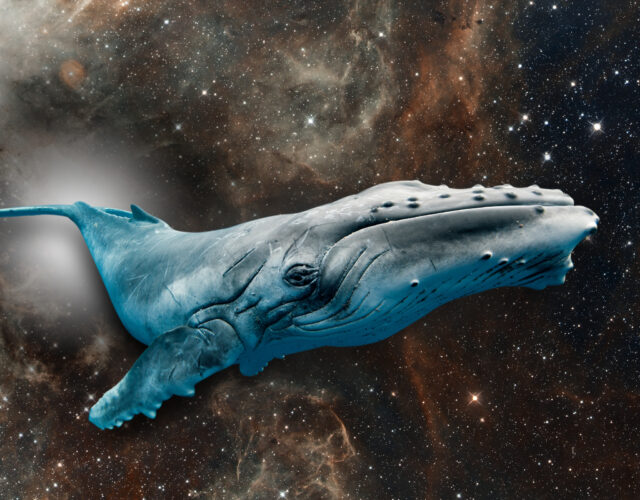Shortly after the Hubble Space Telescope was placed in orbit in 1990, it beamed its first images back to Earth. Astronomers expected crystal-clear photographs of galaxies, free of interference from Earth’s atmosphere; instead they got blurry, distorted images. Hubble’s primary mirror, used to focus its lens, was flawed.
This year marks the 20th anniversary of the first service mission to repair Hubble’s misshapen mirror. Although astronauts quickly corrected for the mirror’s failings, the mistake drew ridicule and triggered a political controversy over the wisdom of spending millions on a flawed program. In 2010 Hubble was again the source of controversy, this time of a very different kind.
On April 25, 2010, the History Channel aired the first episode of its newest miniseries, America: The Story of Us, which was watched by nearly 5.7 million people. The miniseries chronicled the history of the United States from its revolutionary origins to the events of September 11, 2001. But one quote in particular caught the viewers’ imagination. In episode 4 the narrator says, “Even today, whale oil is used by NASA. The Hubble Space Telescope runs on it.” As soon as the episode ended, viewers took to Internet message boards in search of clarification.
Whale oil has been banned in the United States since 1972. Why would NASA still use such a primitive and now taboo substance? Speculation ran wild: was NASA secretly hoarding a stash of whale oil for its spacecraft?
North American whale hunting peaked in the mid-1800s. Whale oil, refined from blubber, was used to fuel lamps and was made into soap and candles. A whaling ship’s crew might make half a year’s wages in a single, successful voyage. But in the 1860s a new oil, petroleum, began its economic rise. In the decades that followed, demand for whale oil plummeted.
Whaling in North America continued into the 20th century, and although most whales were killed for their bones, whale oil still had its uses. It retains its density at extremely high pressures and is resistant to freezing, which made it a valuable lubricant in machinery, especially in car transmissions. Demand for the substance gradually returned in the 1920s as whale oil was incorporated into everyday products like margarine and soap, and during World War II it was a central ingredient in nitroglycerin. But after more than 100 years of intensive hunting many whale species faced extinction. Environmental groups in the United States pressured Congress to protect whales, and in 1972 the Marine Mammal Protection Act was passed. Almost overnight the North American whaling industry disappeared.
Many companies that used whale oil to manufacture lubricants were now the ones facing extinction. One such company, Nye Lubricants, adapted by inventing new types of synthetic lubricants. These artificial compounds replaced the dwindling supplies of whale-based lubricants and were often more reliable than their organic predecessors. Manufacturers of watches and car engines adopted these artificial lubricants. Even NASA used them to lubricate delicate instruments bound for space.
But some people still believe that whale oil is hard at work somewhere inside America’s space machines. In 2003’s Spy Satellites, Paul Kupperberg wrote that during the Cold War the United States formed the National Reconnaissance Office (NRO) to design satellites to spy on the Soviet Union. One such satellite program was called Corona. Kupperberg claims that in 1961 whale oil was used to lubricate a Corona satellite’s delicate camera shutters, which had trouble operating in zero gravity. Though lacking in any cited evidence, this claim is somewhat plausible: in the 1960s manufacturing whale oil was not yet illegal, and the Corona program had nothing to do with NASA (which has denied ever using whale oil in its programs.)
In 2010 Philip Hoare wrote in The Whale: In Search of the Giants of the Sea that “the Hubble space telescope is wheeling around the earth on spermaceti [oil obtained from sperm whales], seeing six billion years into the past.” Hoare cited two sources: the website h2g2 (a user-generated site founded by science-fiction author Douglas Adams) and his own brother, who had worked in the aerospace industry. When interviewed, Hoare’s brother recalled casual conversations with coworkers about NASA’s use of whale oil but could not cite a credible source.
These blubbery rumors might simply be the result of a leap in logic. Nye Lubricants was conducting tests for NASA and the U.S. military in the 1990s, using synthetic lubricants. The connection between Nye, a company that historically refined whale oil, and NASA, the best-known space agency in the world, might have led some to believe that NASA was getting whale oil from Nye. Whatever the source, bloggers and environmentalists, many of them citing Hoare’s work, accused NASA of encouraging illegal whale hunting.
Speculation about the use of whale oil in NASA’s machines had spread far enough by the late 1990s that the organization’s historians conducted a large-scale internal inquiry. At the time, most speculation focused on whale oil use in space shuttles, not in the Hubble telescope. Bill Barry, NASA’s chief historian, recalls that researchers traced the whale-oil rumors back to Nye Lubricants. “Our Shuttle engineers had a discussion with the chief of engineering at Nye Lubricants and left that conversation convinced that whale-based oils had been ‘out of vogue for a good many years’ and had never been used on the Shuttle.” Case closed.
Since then NASA has conducted additional investigations into its other programs and has found no evidence of whale oil being used. After the History Channel documentary aired, NASA turned to Twitter to refute the recycled claim, quoting Hubble’s astrophysics systems manager: “No whale oil was used in Hubble.” But such pronouncements can’t seem to kill the story.
So why is this myth still around? Perhaps it’s one of those things people subconsciously wish to be true, an anachronism from a romanticized period that became an essential part of modern technology. Like most myths, it may contain a drop of truth, and no matter how many times it’s debunked, someone will resurrect it.




